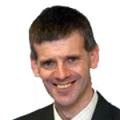
STRANGERS stood out in Kendal in the immediate after-war years, writes KENT BROOKS, who continues his reminiscences of 60 years ago.
When the man who kept the pawnshop on Highgate stood outside his shop under the three golden balls, people would refer to his Jewish ancestry and that he was not local.
I understood this to mean that in some way he was not “yan of oor folk”.
These were generally taken to mean people who could boast of having at least three generations in the churchyard.
I realised that the pawnshop man must be some sort of offcomer.
Although many men had been overseas in the services, most farms had experience of Italian and German prisoners of war as labourers – I remember one, Freddy, with affection, which was not always felt for the large numbers of evacuees who had been shipped. People were amazingly parochial in those days.
In spite of this, the town did reach out to the world in some respects.
In 1947, Gilkes had supplied two turbines to the city of Lhasa in Tibet and I was fired by the stories by their engineers crossing the Himalayas on yaks.
This was one of the many interesting lectures held at the library on winter evenings.
Others were held by people like Howard Somervell (the local Everest hero and member of the shoe family) and excavators of Roman ruins.
There were regular theatre productions by travelling players, some of national status, in St George’s Hall.
The museum was fascinating: I remember particularly the stuffed polar bear shot by Hugh Lowther, the Yellow Earl, and acquired at the sale of Lowther Castle contents in 1947; the skeleton of the 'last wolf' from Helsfell or the lithophone made of slabs of stone collected on Scout Scar and on which you could play a tune.



Comments: Our rules
We want our comments to be a lively and valuable part of our community - a place where readers can debate and engage with the most important local issues. The ability to comment on our stories is a privilege, not a right, however, and that privilege may be withdrawn if it is abused or misused.
Please report any comments that break our rules.
Read the rules hereLast Updated:
Report this comment Cancel